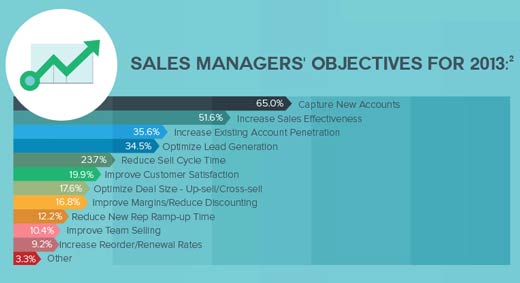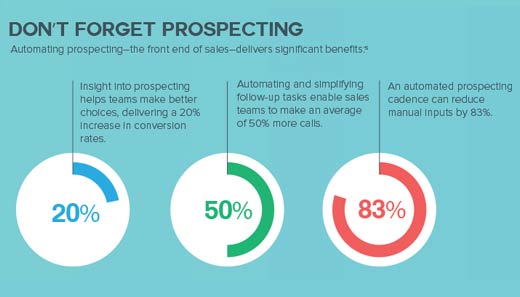Sales organizations require efficiency and automation in order to be successful. For inside sales reps, this becomes even more important since they need a cadence/workflow, calling tools and email to do their jobs effectively. As a result of inside sales growth, sales automation solutions have become an integral part of the sales organizations to help streamline the sales process and close more deals. But not all sales automation solutions are made equal.
Sales automation solutions streamline the sales process and help sales reps work more efficiently and spend more time selling. When selecting a software solution, special attention should be given to prospecting since it is one of the most challenging aspects of sales.
According to Bill Johnson, president of Salesvue, “Prospecting is the most challenging and critical phase of the sales cycle. Automating it with a process that delivers insight turns the art of sales prospecting into a science.”
Click through for nine factors organizations should consider when selecting a sales automation solution, as identified by Salesvue.
Make it a team effort
Sales automation is integral to a company’s success, so it’s wise to form a selection team comprised of sales management, IT and marketing. This team ensures all impacted parties feel the solution is valuable and worth using.
Know your sales organization
Understand the unique needs of your sales organization.
- Inside sales: Sales done remotely by phone and Internet. Needs include cadence/workflow, calling tools, email.
- Field sales: Sales done face to face. Needs include mobile access to databases.
- Lead generation: The process of creating leads and setting appointments for sales reps. Needs include cadence/workflow, calling tools, email.
- Channel sales: Selling indirectly through a dealer/distributor. Needs include cadence/workflow, calling tools, email.
Keep an eye on the future
Inside sales reps generally make up about 50 percent of an organization’s sales departments, and usually have a higher percentage of quota than field reps. Inside sales is also growing 300 percent faster than field sales, so it’s important to ensure your inside sales team is equipped with the right tools.
Pinpoint your pains
It’s important to identify and understand where you organization’s sales pain points are occurring. Are your reps missing sales targets, being overly optimistic about opportunities or not producing expected results? Are you able to identify what works and what doesn’t and accurately forecast sales?
Sales manager’s objectives
What are your main objectives? In 2013, the top objectives for sales managers included capturing new accounts, increasing sales effectiveness, increasing existing account penetration, and optimizing lead generation.
Cloud or on-premise?
Do you want to house automation software on your own servers or on servers owned by the software company? Cloud solutions can provide a lower cost of entry, automatic software updates, disaster recovery capabilities, bandwidth flexibility and the ability to work from anywhere. On the flip side, on-premise solutions have no monthly subscription fees, use your existing server infrastructure, and provide your organization with full system control over data, including potentially lower security risks.
Software functionality
It is critical for organizations to pinpoint their software “must-haves” and “nice-to-haves.” Important functionality to consider includes a workflow engine that organizes, automates and optimizes the daily workflow of your sales team members with a calling and email cadence and automated next steps; the ability to integrate with an existing CRM solution; flexibility and scalability; analytics that can provide a clear understanding of what’s being done; reporting; and mobile access.
Don’t forget prospecting
Automating prospecting – the front end of sales – delivers significant benefits. Insights into prospecting help teams make better choices, delivering a 20 percent increase in conversion rates. Automating and simplifying follow-up sales tasks enables sales teams to make an average of 50 percent more calls. And, an automated prospecting cadence can reduce manual inputs by 83 percent.
A word about analytics and insight
One of the most important components of a sales automation solution is detailed analytics that show how to create hiring plans based on empirical data, the ability to provide realistic sales projects, provide complete visibility into the status of leads, create insights into which tactics work best, significantly reduce rep ramp up time, provide more efficient and product sales reps, and increase sales revenue without increasing staff.












